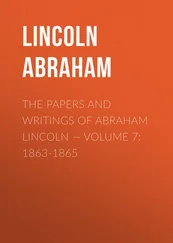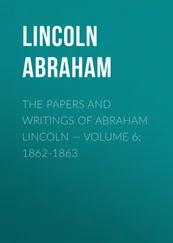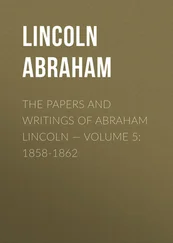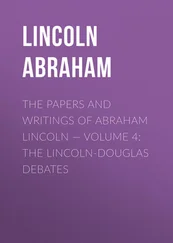Curiously, despite all the socio-political turbulences in medieval India, normal life seems to have been fairly comfortable for most people there, though only at the very basic level. India was blessed with rich natural resources, so the one essential survival requirement of the common people, food, was easily available for all at affordable prices in normal times. What is shocking about the medieval Indian society is the appalling disparity between the incredible opulence and wanton lifestyle of the ruling class and the dreary subsistence level existence of the common people. ‘Those in the country are very miserable, whilst the nobles are extremely opulent and delight in luxury,’ observes Athanasius Nikitin, a Russian traveller in India in the fifteenth century.
The worst horror that the common people in medieval India had to face in their normal life was the visitation of famine which ravaged the land periodically. Agricultural production at this time was almost wholly dependent on the monsoon, so when the rains failed, famine felled thousands and thousands of people in one sweep. And those who survived did so by eating whatever they could find, however filthy or rotten, even putrefied carrion, and by taking to cannibalism. ‘One day I went out of the city, and I saw three women … cutting into pieces and eating the skin of a horse which had been dead some months,’ reports Battuta. ‘Skins were cooked and sold in the markets. When bullocks were slaughtered, crowds rushed forward to catch the blood, and consumed it for their sustenance.’ Adds Barani: ‘Famine was very severe, and man was devouring man.’
THE SOCIO-CULTURAL AND political profile of India changed radically with the establishment of the Delhi Sultanate. Never before in its millenniums-long history had India faced a challenge as potent and irreconcilable as that of Turco-Afghans, and never before had it failed to absorb invaders and migrants smoothly into its society and culture.
India at the time of the Turkish invasion had been in a dormant state for several centuries, remaining hermetically sealed within the subcontinent, with virtually no contact with the outside world. One would have expected that the Turkish invasion would awaken India from its slumber and stimulate it to transform itself to meet the Turkish challenge. But what happened was the opposite of this: instead of responding to the challenge of Islam, Hindu society curled up tighter into itself.
The aggressive presence of Turks in India made virtually no difference in the life and culture of most Indians. Nor did the contact with Hindus make any notable difference in the life and culture of most Muslims. Their civilisations were totally unlike each other in every respect to have any major influence on each other.
Hindus were treated as second class citizens in Muslim states, but as citizens nevertheless. They had their own rights. In any case, the discriminatory treatment that Hindus received at the hands of Muslim rulers would not have troubled them much, for most Indian communities were subject to worse discrimination in their own sharply stratified caste society. True, Hindus and Muslims did live separately and did not mix socially; but then so did the different Hindu castes live separately and did not mix socially. Even in the matter of jizya, not many Hindus would have felt it as a particularly discriminative tax, for Muslims too had to pay a community tax, zakat. Besides, jizya was usually imposed on individuals only in towns, while in villages, where most Hindus lived, it was assessed as a collective tax. Muslim rulers did slaughter a large number of Hindus, and demolish many of their temples and shrines, but Hindus seem to have taken all that fatalistically, as they normally did with nearly everything else in their lives.
There was hardly any display of resentment by Hindus against Turks. Nor were there any notable communal clashes during the many-centuries-long Muslim rule in India. This was largely because the establishment of Muslim rule in India made no notable difference in the lives of most Hindus, as most of them lived in villages, where there were scarcely any Muslims, and the lives of the people there were largely unaffected by the establishment of Muslim rule.
The only Hindu class that suffered any great material or social deprivation under Muslim rule was the ruling class, particularly the rajas, most of whom lost of their wealth and power. But several of the rajas saved some of their status and wealth by serving the sultans in subordinate positions. Similarly, most Hindu zamindars and chieftains served the sultans in various administrative capacities. And so did Brahmins, presumably in large numbers, and they were therefore rewarded by the sultans (except Firuz Tughluq) by exempting them, as a community, from the payment of jizya. As for Hindu commoners, very many of them served in the army and the administration of the sultans. Hindus quite probably constituted the majority of government employees in Muslim states. In a sense it was Hindus who ran the government for the sultans.
HINDUISM, BEING A non-proselytizing religion, posed no threat to Islam. Rather, being a polymorphic religion, it was tolerant and accommodative towards Islam, as it was towards its own diverse castes and sects. But the tolerance of Hindu society was tolerance by segregation; it was in fact a form of intolerance. Every community was free to live in whichever way it liked, but none was allowed to intrude into the cultural or social space of other communities. This meant that Hindu society, despite its appearance of tolerance, was in fact a highly discriminatory, inequitable and intolerant society, which sharply and unalterably segregated people by religion, sect and caste, and treated each group differently.
However, Hindu caste segregation involved no overt oppression, as it was birth determined, and was not the result of any social action by any group. Nor did caste segregation lead to any notable social tension. Even though segregation was an oppressive practice, lower caste Hindus did not generally feel oppressed by it, but accepted the circumstances of their life fatalistically, as a natural and inevitable outcome of the transmigratory process, the conditions of their life being predestined by their acts in their previous lives. Besides, the pervasive fatalistic attitude of the Indians of the age made them passively accept the conditions of their life, whatever those conditions were, and not struggle against them, as they believed that those conditions were inexorably fated by their karma.
And, paradoxical though it might seem, India’s social diversity was the basis of its social cohesion and efficiency, for the different castes, though they were rigidly segregated from each other socially, were tightly integrated with each other in their functions, with each caste, from the highest to the lowest, including the outcastes, occupying a specific social niche and providing an exclusive and indispensible service in society. The different castes were like the different organs and limbs of a living being.
The caste society was a cooperative society. The diverse castes in it were not adversaries, but co-operators. And together they all constituted one cohesive society. The caste system thus enabled Hindu society, despite its diversity and appalling inequity, to function efficiently and peacefully for very many centuries.
Unfortunately, the caste system had a negative side to it, which nullified most of its benefits — it was a singularly unjust system, and was awfully wasteful of human resources, for its division of labour was based not on the merit of individuals, but on their birth. And it kept society sedated, in a state of coma, precluding mutation and progress.
In contrast to this birth-determined social segregation in Hindu society, Muslim society was basically egalitarian. Similarly, though both Hindu and Muslim societies had slaves, their treatment of slaves was entirely different from each other. Being a slave in Muslim society, unlike in Hindu society, was not an insurmountable handicap or degradation, for all professional and political avenues were open to slaves, depending on their ability.
Читать дальше












